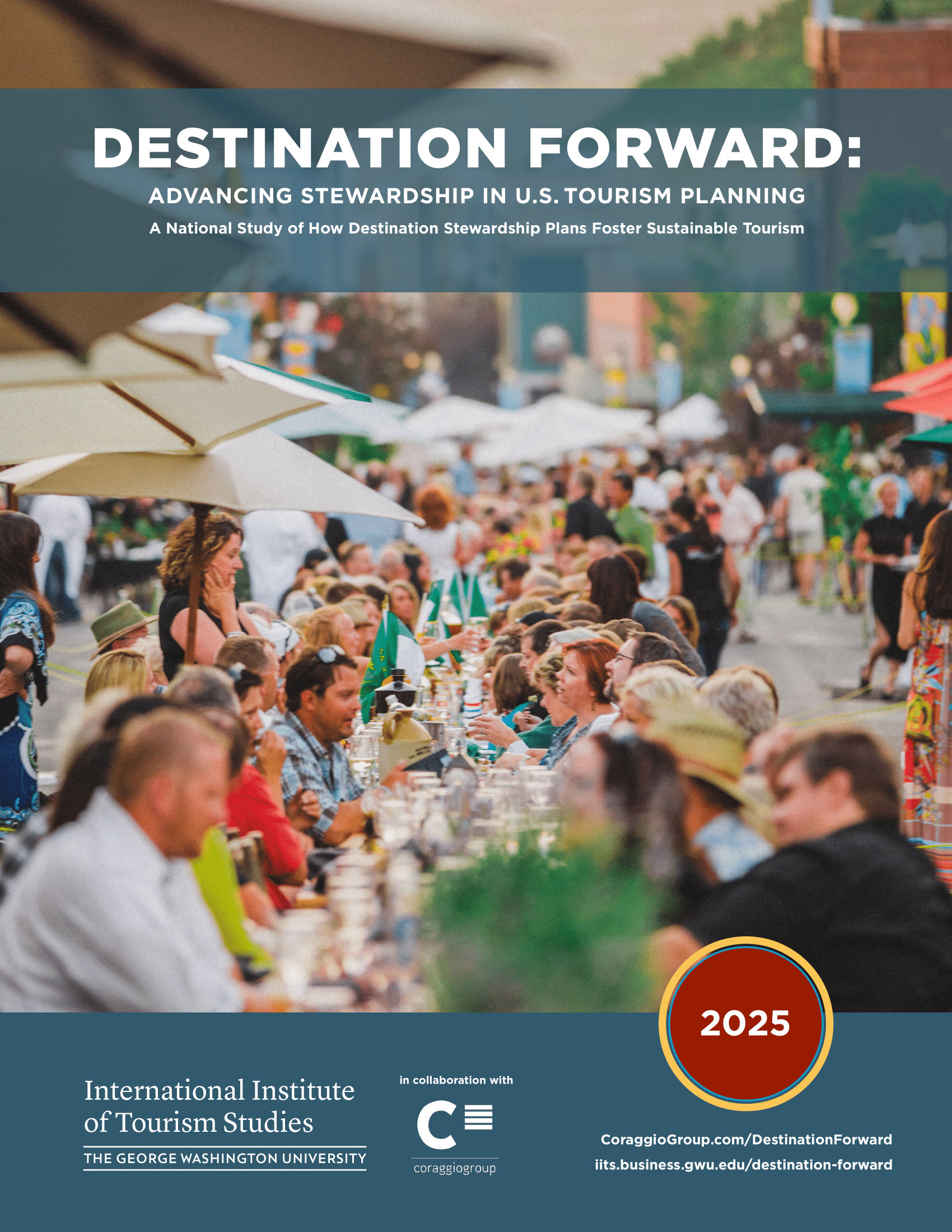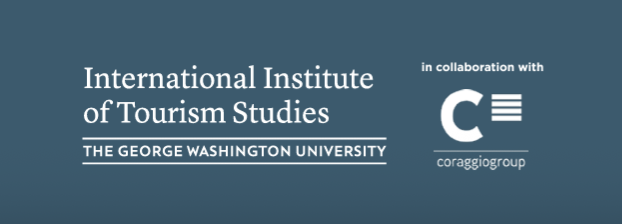Destination Forward
Destination Forward: Advancing Stewardship in U.S. Tourism Planning
The most comprehensive industry report yet on the future of destination stewardship in the U.S.
Tourism destinations in the U.S. are at a turning point. Communities across the country are grappling with housing pressures, workforce gaps, overcrowding, and the escalating impacts of climate change.
The pandemic was a wake-up call. While many destinations were already feeling the impact of tourism before COVID-19, the pandemic served as a catalyst. Recovery brought a wave of visitors—often more intense and less predictable than before—putting sharper pressure on infrastructure, ecosystems, and community well-being. Growing community concerns sparked a critical shift: destination organizations began asking, What kind of tourism do we want, and who is it really serving?
In response, local leaders and destination organizations are stepping up. They are reimagining how tourism is planned and managed. They are moving beyond marketing to embrace destination stewardship. Across 35 cities, counties, and regions, a new generation of tourism plans has emerged, grounded in local values, long-term thinking, sustainability, and inclusive collaboration.
The findings reveal a shift in mindset. They highlight how destination organizations are building new networks, earning a seat at key decision-making tables, and putting community well-being at the center of tourism’s future.

A Comprehensive Analysis of 35 Plans
Real-World Case Studies of Good Practice
Strategic Takeaways for DMOs and Policy Makers
Destination Forward is an industry publication produced by the George Washington University International Institute of Tourism Studies in collaboration with the Coraggio Group. It is led by Seleni Matus, Executive Director of the Institute, and Salvador Anton Clavé, Ph.D., Distinguished Professor and Director of the Research Group in Territorial Analysis and Tourism Studies at the Universitat Rovira i Virgili. The publication presents the main findings of the largest national study of its kind—examining how 35 local U.S. destination stewardship and management plans align with key sustainability themes and influence tourism policy and practice.
The study used a comprehensive analytical framework informed by global standards to assess each plan’s vision, goals, and actions. It also incorporated direct input from 31 destination organization leaders to better understand their motivations, experiences, and lessons learned.
In addition to the comparative assessment, the report features a gallery of good practices. These highlight exemplary initiatives from the plans that demonstrate stewardship principles in action.
94%
of plans prioritize resident quality of life
77%
address housing affordability and overcrowding
40%
include climate adaptation, but only 9% offer detailed action
80%
of plans were led by DMOs expanding into stewardship and policy roles
The destinations covered by the 35 plans studied vary widely—from dense urban centers like Los Angeles to mountain regions such as Jackson Hole, island communities like Maui, coastal areas such as Sonoma County, and rural destinations like Hocking Hills. Some destinations are home to fewer than 5,000 residents, while others welcome more than 30 million visitors each year. Yet despite these differences, they share a common shift: away from tourism as simply a marketing activity, and toward tourism as a shared community responsibility.

All plans were selected based on clear stewardship criteria. They take a holistic approach that integrates environmental conservation, cultural preservation, resident quality of life, and economic sustainability. They embed sustainability throughout the plan, engage a broad range of stakeholders, and foster collaboration across sectors.
Through this lens, six powerful takeaways emerged, showing how destinations across the U.S. are working to redefine tourism’s role in building stronger, more resilient communities.
Key Insights from the Report
1. Community Well-being is Central to Stewardship Planning
2. Destination Organizations Are Evolving Through Stewardship Planning
3. Funding, Authority and Capacity Are Core Constraints
4. Strategic Intent Often Outpaces Tactical Follow-Through
5. Social and Economic Equity: Still More Talk Than Action
6. Environmental Goals Are Common, Clear Actions Are Not
Whether you're developing a destination plan, addressing complex tourism-related challenges, or evaluating the evolving role of your organization, Destination Forward provides practical, research-based insights to guide your next steps.

The key takeaway for us was really becoming more of a community-centric organization based on the premise that what's good for residents will always be good for visitors, but that the converse doesn't always hold true.
Adam Burke
CEO, Los Angeles Tourism & Convention Board
Destination Forward is part of a larger, ongoing academic research project led by the George Washington University International Institute of Tourism Studies. The findings shared in this first publication represent an important early step in a research effort that will be revisited over time. As the work evolves, it will generate additional practical insights to support destination management and stewardship. The research team used a variety of methods to identify and compile the 35 local-level U.S. destination management and stewardship plans included in the study. If you know of a plan or strategy we should consider as part of this ongoing research and future publications, please get in touch with us at iits gwu [dot] edu.
gwu [dot] edu.



